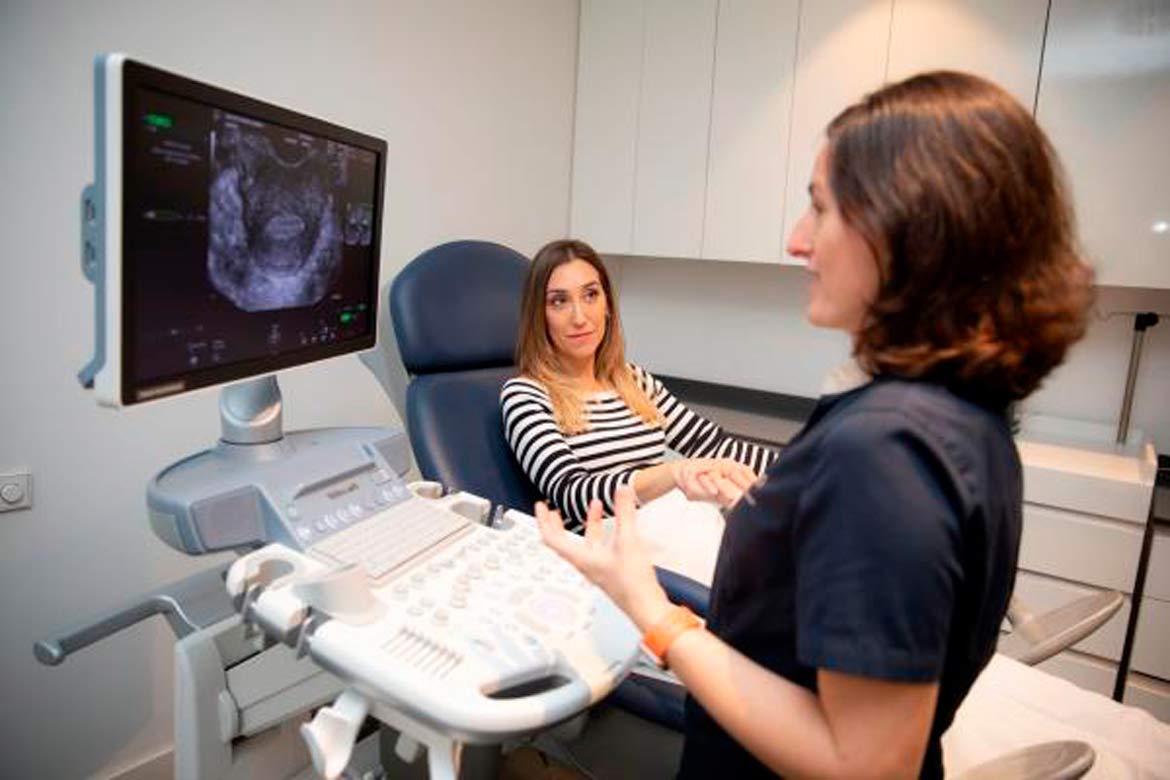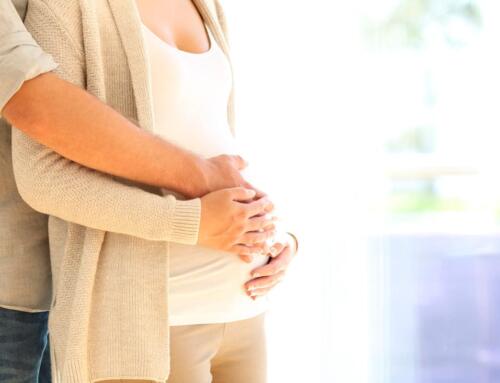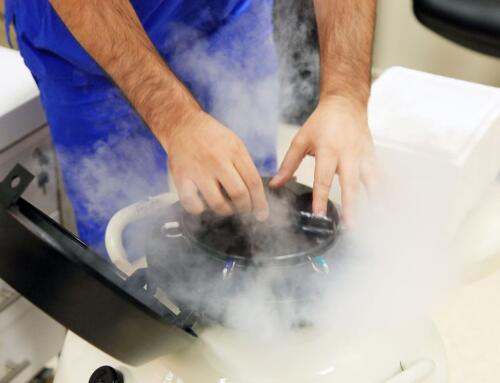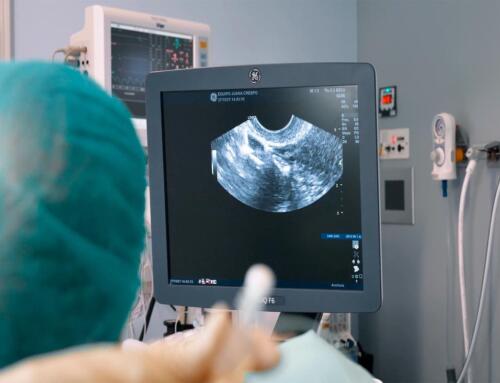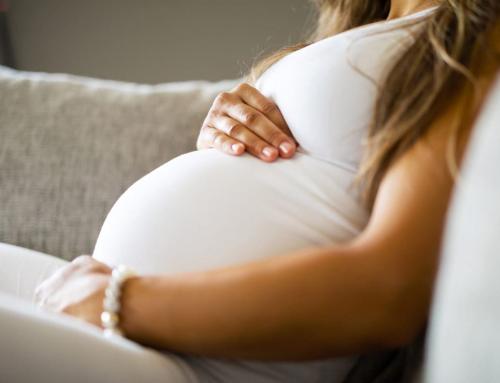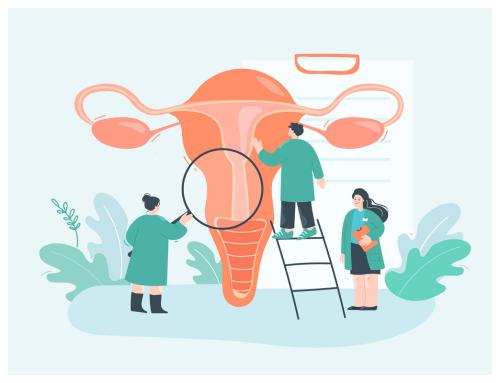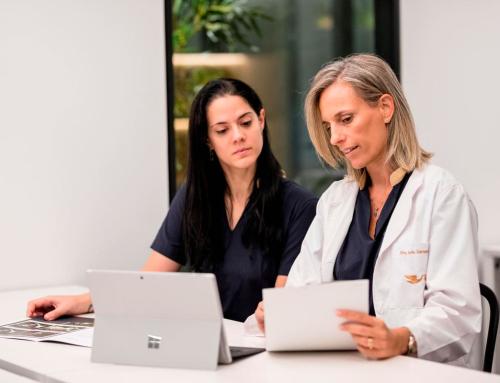.
Did you know that there are different ways of endometrial preparation in IVF? The doctor’s experience is essential to determine which is the most appropriate procedure to improve the receptivity of the embryo in each case.
If you want to know what the different endometrial preparation methods are and in which cases they are most appropriate, we invite you to read this article.
Why endometrial preparation is so important
Many assisted reproduction clinics focus solely on obtaining quality embryos, giving little importance to the role of the uterus. But in Juana Crespo both issues are equally important.
Endometrial preparation is not a simple procedure within assisted reproduction, but it is something key that we work on in a personalised way. Clearly, in order to achieve pregnancy you need to obtain good embryos, but if your endometrium is not prepared for embryo implantation, all the work will have been in vain.
Therefore, Juana Crespo’s team evaluates everything, because the reason for not achieving a pregnancy can be due to one or several factors: embryonic, tubal, endometrial, or uterine, for example.
Thus, if the endometrium is not in optimal conditions, we will not make the transfer in that cycle. We assess how to prepare the endometrium for the next cycle and not risk losing a single embryo when the conditions are not optimal for each patient. This way, when our patients go for a transfer, it is because we make sure that the endometrial preparation meets the best conditions to achieve pregnancy. This is the only way we have been able to meet good results.
What is the endometrium
Before explaining the different strategies we follow at Juana Crespo for endometrial preparation, we want you to understand how the endometrium works.
The endometrium is the mucous layer that lines the uterus. It is mainly responsible for the implantation of the embryo so that pregnancy can occur.
It is a highly vascularised tissue, which is very necessary throughout gestation. This tissue thickens throughout the menstrual cycle, while at the same time it changes thanks to the action of two hormones: first, oestrogen, and then progesterone. This allows the embryo to implant and pregnancy to occur.
When pregnancy does not occur, the endometrium sheds and is eliminated each month in the form of menstruation.
Requirements of the endometrium for proper implantation
For a correct implantation of the embryo, it is necessary that the endometrium has 3 main characteristics:
1- Thickness
The size of the endometrium is crucial. It is considered to be ready when it measures around 7-12 mm, although it is necessary to relativise this according to each patient. The doctor’s experience is important here because, for example, in patients with endometriosis we use oestrogens at very low doses in the endometrial preparation. In this way we achieve an adequate endometrium without impairing the uterine walls, as these patients are very sensitive to the effects of oestrogens.
In our team we have gained a great deal of experience in performing ultrasound scans on the same day of the transfer to assess how the endometrium has been modified, how compact it is, etc. We make sure that it meets the right conditions just before the transfer.
2-Good appearance
The structure of the endometrium is also very important. In ultrasonic monitoring, in addition to measuring the thickness, we check if the structure of the endometrium meets the necessary conditions to schedule the transfer. It must have a trilaminar structure, be regular, well delimited…
3-That it is receptive
Here we are talking about the famous window of implantation, which is the period of time in which the endometrium is receptive and ready to receive the embryo. This window occurs between days 19 and 21 of the menstrual cycle (5-7 days after ovulation). The window of implantation can last several days, but synchrony with the embryo is required.
Types of transfers
When carrying out a transfer, we can choose between a fresh or a delayed transfer. In other words, without freezing the embryos or by freezing them to prepare the endometrium for a later cycle.
Fresh transfer
In this type of transfer, the embryo is not frozen, but transferred 3 to 5 days after the puncture. This transfer is suitable for those patients who meet certain requirements such as: an optimal endometrium during stimulation in terms of appearance and thickness, i.e. an endometrium that is not too thick, or that the oestrogen levels in the blood during stimulation are not too high due to the risk of hyperstimulation that this entails.
Taking into account that most of our patients are elderly, and that the uterus probably needs treatment prior to the transfer, this practice is not usually performed in our clinic. Only in very specific cases such as young women without a uterine factor as a cause of sterility. Or also in patients who have already undergone uterine treatment and then stimulation.
Apart from these exceptions, most of our patients do not meet the requirements for a fresh transfer. Therefore, it is necessary to perform an endometrial preparation before the time of the transfer.
Delayed transfer
As we say, in Juana Crespo, 90% of the transfers are deferred cycles. That is to say, first we obtain the embryos, vitrify them and in another cycle we prepare the uterus for the transfer. In this way we avoid the adverse effects of ovarian stimulation on the endometrium and, on the other hand, something even more important, this allows us to select the cycle in which the endometrium presents the best conditions to carry out the transfer.
Types of endometrial preparation
Since most of the transfers we perform are in different cycles, at Juana Crespo we have 2 protocols to achieve an ideal endometrial preparation:
1-Endometrial preparation with a natural cycle.
This type of endometrial preparation benefits from the menstrual cycle. It is, therefore, the most suitable method for women who have regular periods. In Juana Crespo we have recently opted for this type of endometrial preparation because we have found that it works very well in women who have a more fibrotic uterus, that is, an older and less vascularised uterus.
The menstrual cycle consists of two parts. The first phase is the proliferative phase, which lasts until day 14 of the cycle, when ovulation takes place. During this phase, the endometrium increases in thickness due to the effect of the woman’s oestrogens. If we follow a natural cycle preparation, no medication is given to the patient in this first phase, so we depend exclusively on the development of her follicle and endometrium.
The second phase of the natural cycle is the secretory phase. This phase develops from day 15 of the cycle until the end, under the action of progesterone. Once we see that the endometrium is ready, and the follicle is the right size, we can choose to induce ovulation or directly support the uterus with progesterone supplementation.
The results we are obtaining with endometrial preparation following the natural cycle are really positive. However, it should be borne in mind that it is necessary to carry out more ultrasound checks during the first part of the cycle, as there is a risk that the patient will ovulate earlier than expected, which would mean we would have to wait until the following month.
2-Endometrial preparation with a substituted cycle
In this type of endometrial preparation we have to give the patient oestrogen. This is ideal for women who have not had a natural cycle, for those who do not have periods or who have very irregular cycles with periods every 3 or 4 months. In this way we try to shorten the cycle, replacing it.
We also use it for those patients who come from outside Spain or far away from our clinic in Valencia. We try to synchronise and balance your journey with a substituted cycle, as we know that in 80% of women with 7 or 8 days of oestrogen administration, they are ready for the transfer.
Within the substituted cycle there are different variants:
- Taking oestrogens on the first day of menstruation.
- Previous ovarian suppression, i.e. we administer GnRH antagonists for 5 days. This is an antagonist that helps to prevent ovulation. This protocol is used in young women who continue to have periods.
- A GnRH analogue can also be given, which is decapeptil or gonapeptil. The latter is usually used in patients who have endometriosis or quite severe uterine adenomyosis because endometriosis and adenomyosis are oestrogen-dependent, which means that with each menstrual period, their evolution worsens. In this way, in addition to preparing the endometrium for the transfer, we also treat the uterus in order to improve the chances of achieving pregnancy.
During the endometrial preparation with a substituted cycle, we carry out an ultrasound check approximately one week after starting the oestrogen treatment to measure the endometrium. In this way we can see if it is responding to the medication or if the dose needs to be readjusted or if the mode of administration of the oestrogens needs to be changed.
When we see that the endometrium is optimal and has the right thickness (between 7 and 11 mm), we add progesterone. From this moment we determine the specific day of the transfer, which will also depend on the number of days the embryo is frozen. If the embryo was vitrified when it was 5 days old, the patient must have been on progesterone for 5 days before the transfer.
A personalised strategy
At Juana Crespo we are characterised by the individualisation of all our treatments. And we also do this with endometrial preparation. We study each patient very well, we see how the uterus is by means of ultrasound or magnetic resonance or diagnostic hysteroscopy. And we also take into account the previous cycles she has had. So, for example, if the patient has had previous treatments and we have seen that certain endometrial preparations are not optimal, we choose to change that preparation.
In cases where pregnancy has not been achieved and there are implantation failures, we study the failures to try to understand the reason and what we can do to improve the result. Therefore, studying failure allows us to understand things better, investigate, learn and improve in order to change the results.
Every patient is different and may have to follow a different endometrial preparation. But whether it is a natural cycle or a substituted cycle, the pregnancy rates are very similar. That is to say, following a natural cycle does not mean that you have more chances of achieving pregnancy than with a substituted cycle, and vice versa. The important thing is that each patient can benefit from the most suitable type of endometrial preparation for her specific case.
If, in spite of having good embryos, you have had implantation failures in other clinics and you want to give yourself a new opportunity with a team specialised in highly complex cases, call us on 961 042 557 or write to us at info@juanacrespo.es and you can book your first visit. At Equipo Juana Crespo we do not carry out treatments based on standardised protocols. We create a tailor-made process for you, which includes a personalised endometrial preparation to optimise all your pregnancy options.
Don’t forget to follow us on our Facebook, on Instagram and on our YouTube channel where you will find more tips from the entire Juana Crespo Team. We look forward to seeing you!
.


